Next Fashion Designer of Tokyo
2025
Announcing the contestants who passed the first screening
Free Category
-
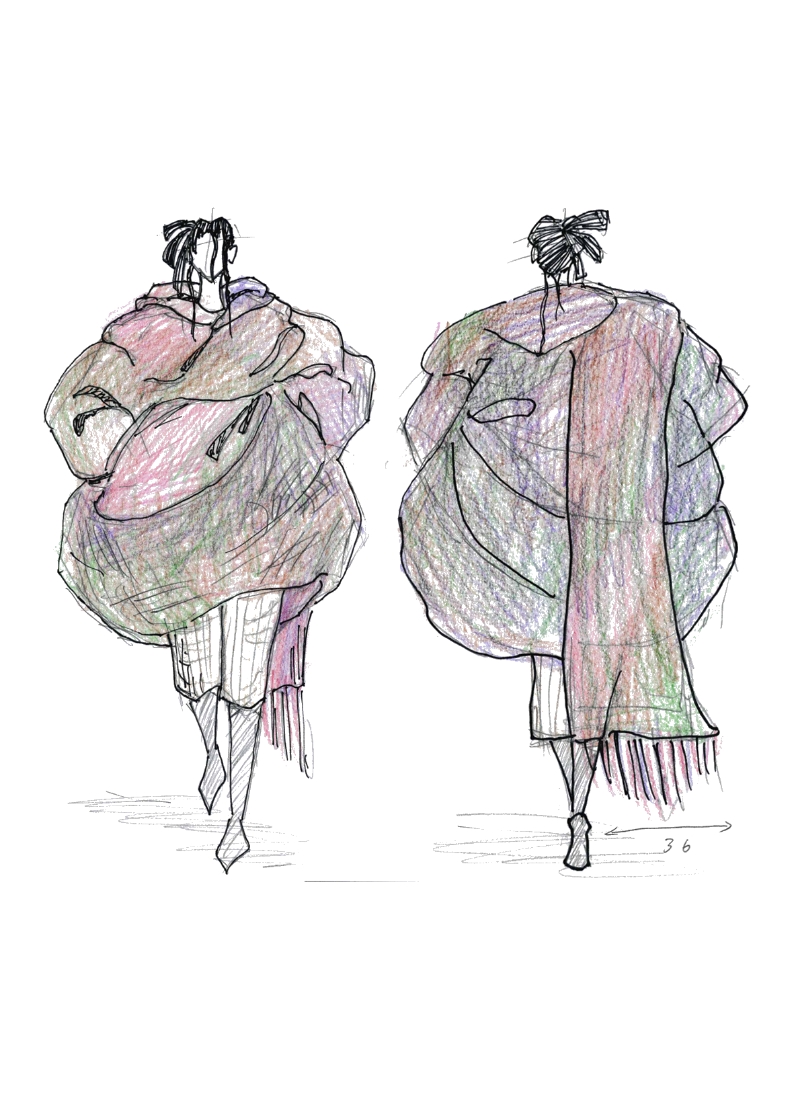
Tama Art University
梅宮 青
Work name:-en-
Concept
There is a word in Japanese, "en," which means "connection."
This work expresses the bonds between people, wishing for a better future and inviting viewers to become a part of it, prompting them to reflect on their lives.Features
- Designed with motifs from kimonos gifted through meaningful connections (en).
- Focuses on the 36 cm width of traditional kimono fabric, incorporating elements of traditional Japanese clothing into a Western-style garment.
-
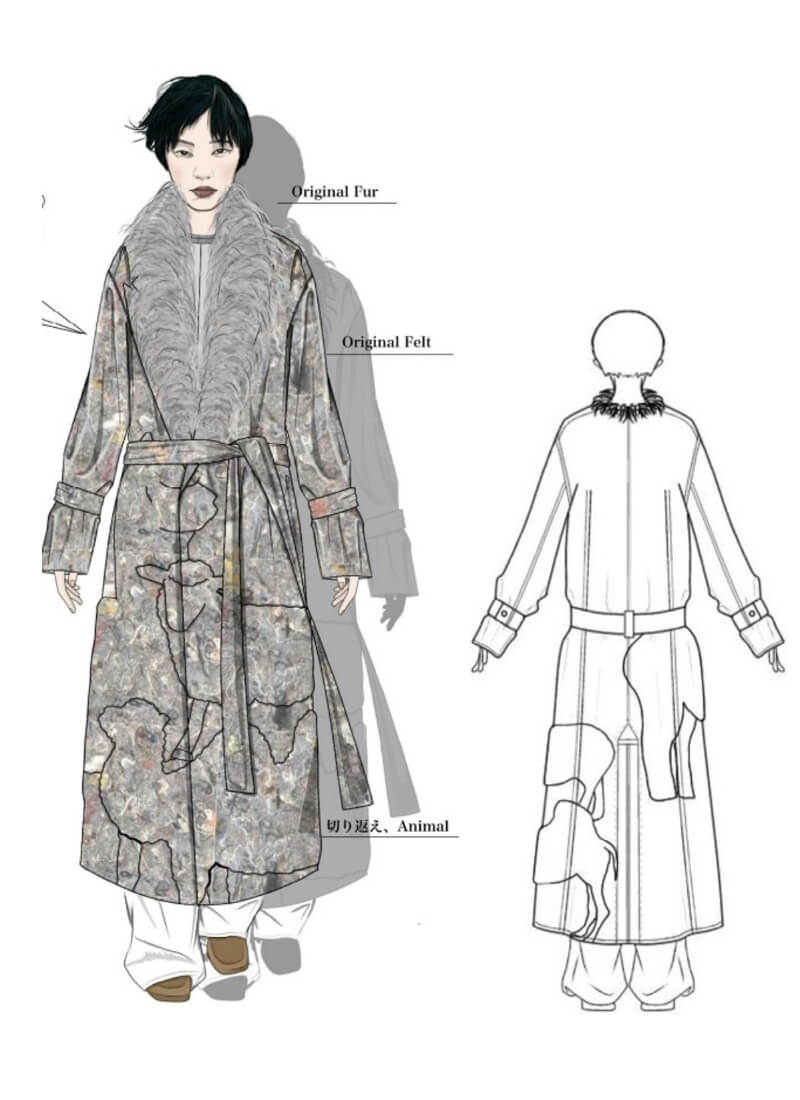
Professional Institute of International Fashion
岡野 留伊
Work name:Be Felt
Concept
This work embodies the forms of "animals" and "nature" that are changing due to waste pollution, attempting to restore their original forms or transform them back to their authentic state using original felt material.
Features
- Uses original fabric created by recycling old clothes into fibers and turning them into new materials.
- Incorporates animal shapes as separate parts within the pattern to create a three-dimensional effect.
- Emphasizes sustainability by breaking down household clothing into fibers for new materials or recycled felt, demonstrating a commitment to waste reuse and environmental consciousness.
-
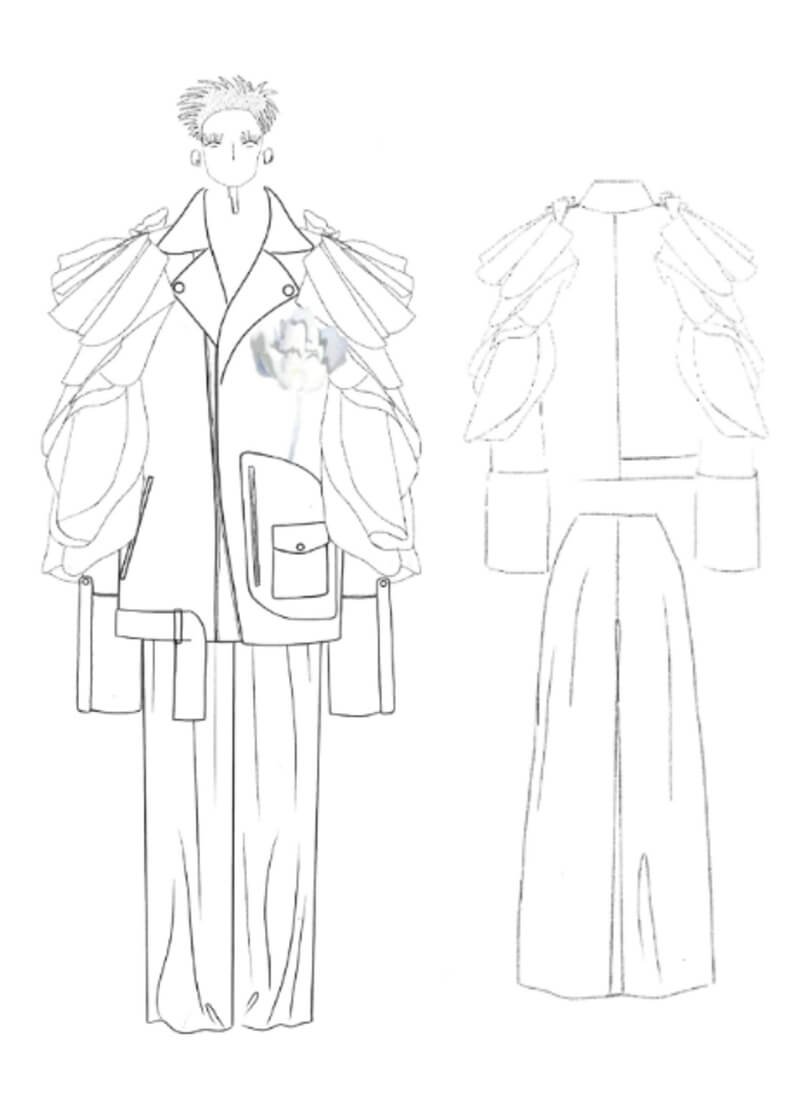
Bunka Fashion College
木佐貫 綾乃
Work name:Punk have afternoon tea
Concept
I want to expand the perspective on gender beyond the binary choice of male or female.
This design aims to broaden the scope of men's fashion by incorporating androgynous elements, imagining a future where Tokyo embraces sexual diversity.Features
- The design adds floral elements essential to afternoon tea culture to a rider's jacket, combining the rebellious edge of punk with the elegance of afternoon tea.
- Parts of the garment, such as sleeves and cuffs, are detachable, allowing customization according to mood or occasion.
-
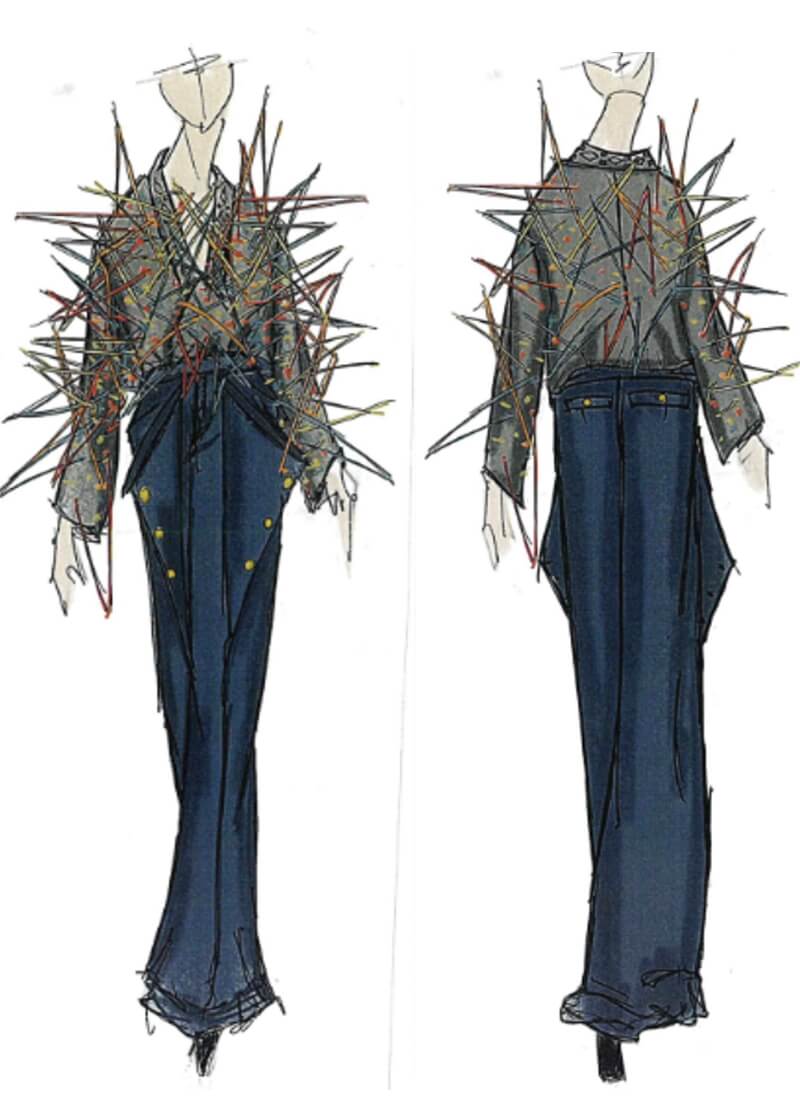
Bunka Fashion College
國本 和樹
Work name:MES VOYAGES (My Travel)
Concept
"A work that conveys the creator's spirit by approaching design through sakiori weaving."
Inspired by photos of port towns in France from my uncle's travelogue.Features
- Incorporates shape-memory plastic wires into the weft of sakiori weaving, making them protrude straight from the fabric to express the impactful structural pattern of a series of yachts.
- Crafted in a shape reminiscent of sailor pants to evoke the atmosphere of a port town.
-
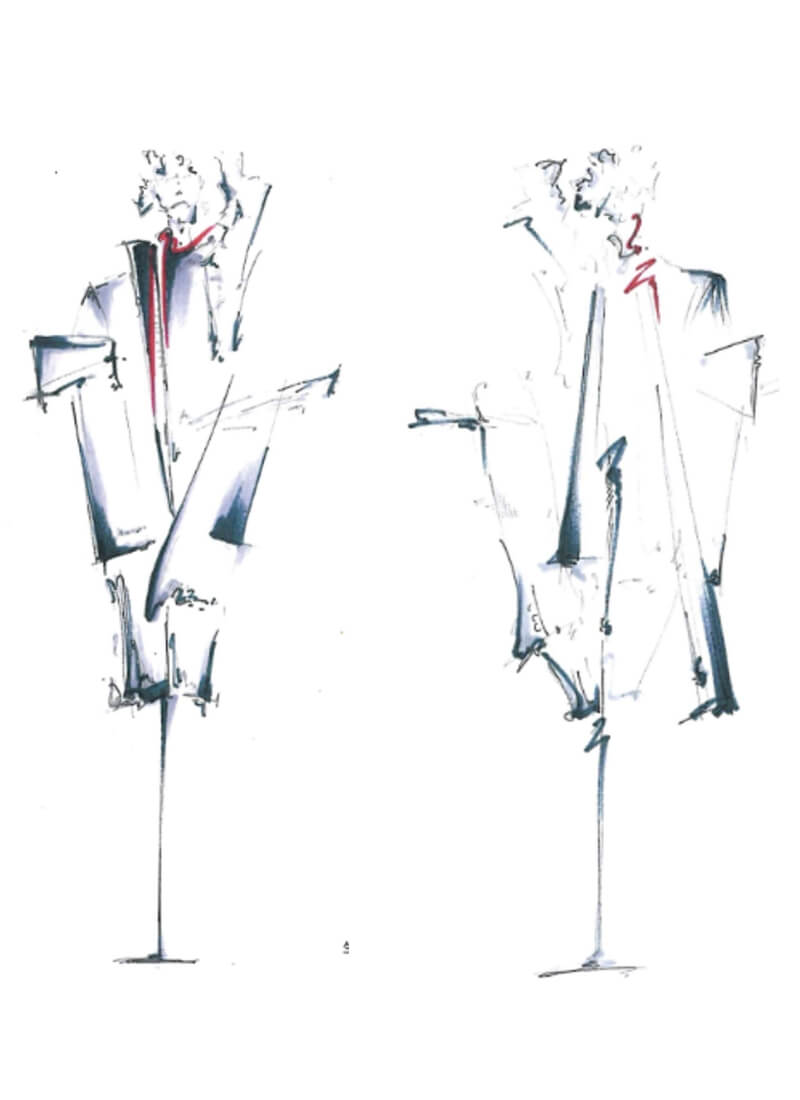
Esmod Tokyo
熊澤 径
Work name:Re-editing Perspectives
Concept
Expansion of clothing using experimental methods.
Depicting the process of modern re-editing of military wear by changing its form and replacing elements.
This experimental collection poses questions to existing clothing and proposes new approaches to clothing.Features
- To express the image of clothing being re-edited, wood is used to divide the body, clothing, and space. The wood is removable, making it more wearable when detached.
- As fashion reaches a saturation point in its function as attire, by evolving existing clothing with an emphasis on art as expression, this work aims to stimulate both empathy and purchase interest.
-
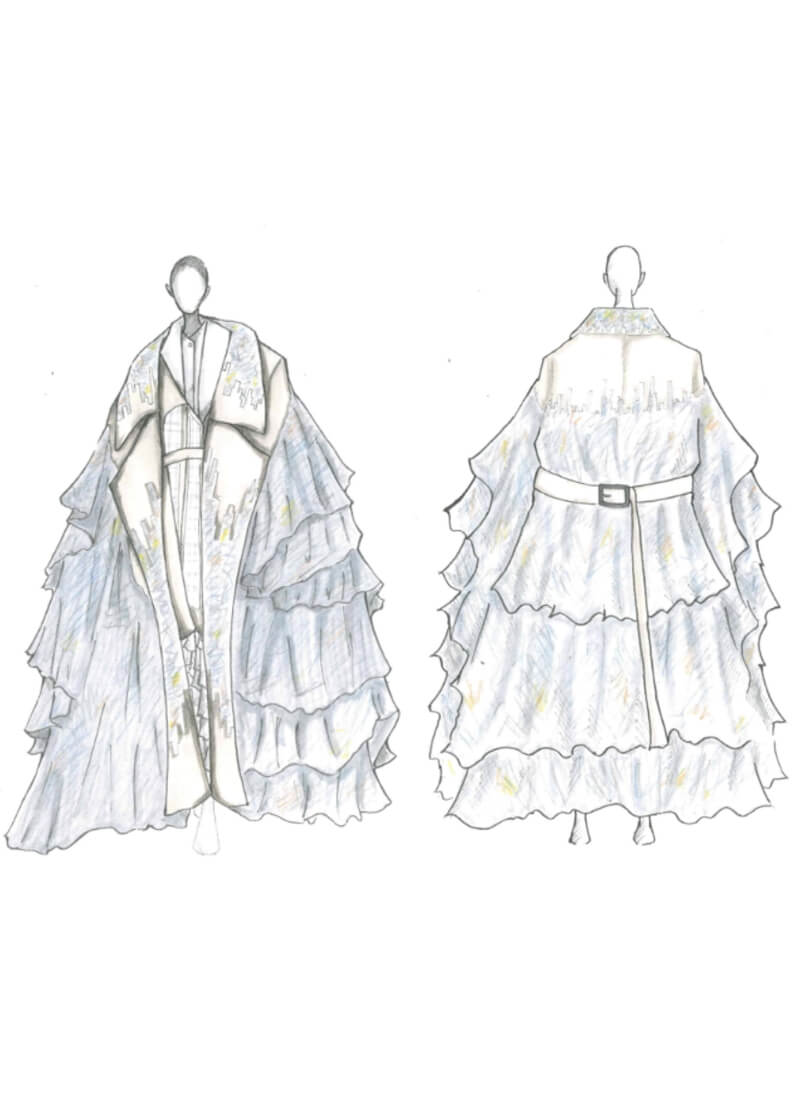
Bunka Fashion College
中村 虹輝
Work name:Circulating Clothing
Concept
Clothing with a consideration beyond sustainability.
Features
- The textile was created by reducing unwanted fabric into fibers and combining them with fabric.
- Aimed to design clothing that, if it is no longer worn, can be repeatedly recycled back into fibers and transformed into garments or other items, embracing a sustainable cycle.
-
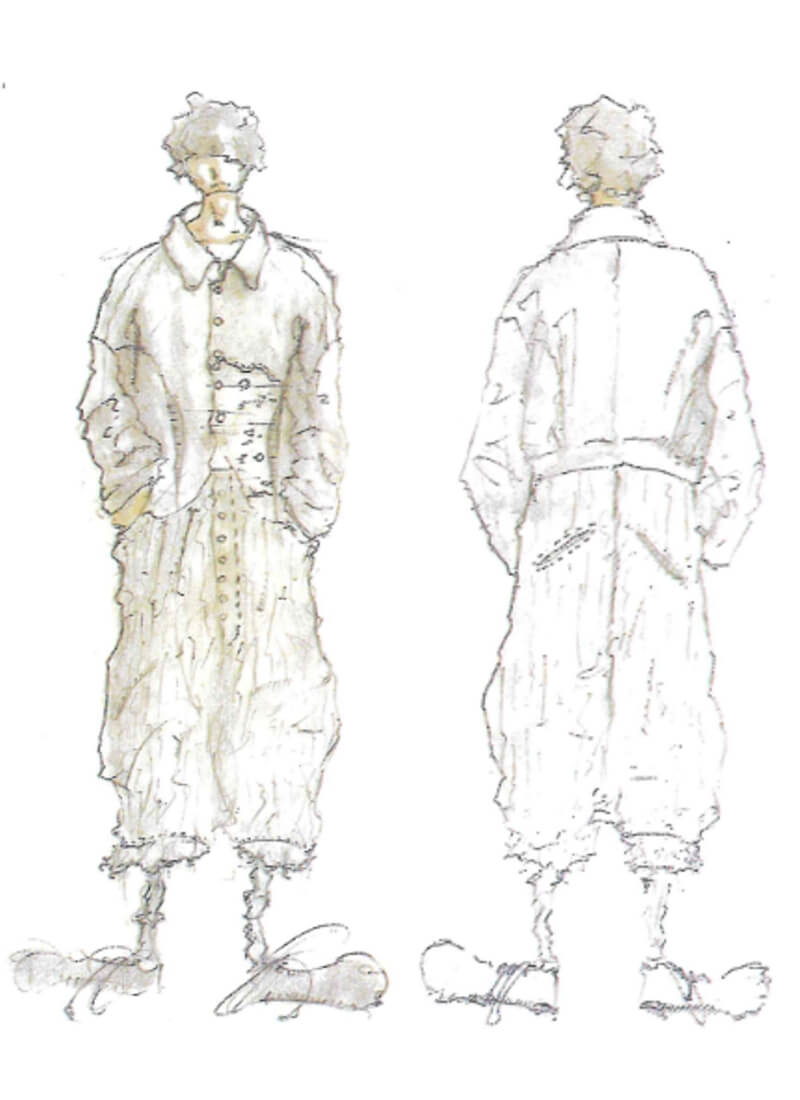
Esmod Tokyo
二宮 櫻壽
Work name:Hymn to Humanity
Concept
The concept is "Tissere l'espace," which means "weaving space" in French.
This work is created with the desire to extract and blend various elements that constitute the self, such as personal life and interests, with those of the people around, clothing history, and nature, to give the garment a new value as a tribute to humanity.Features
- Since clothing can outlive humans, I aspire to create responsible creations where people and clothes walk together, allowing them to be passed down through generations.
- The fabrics are chosen with consideration for environmental impacts, aiming to evolve alongside people.
-
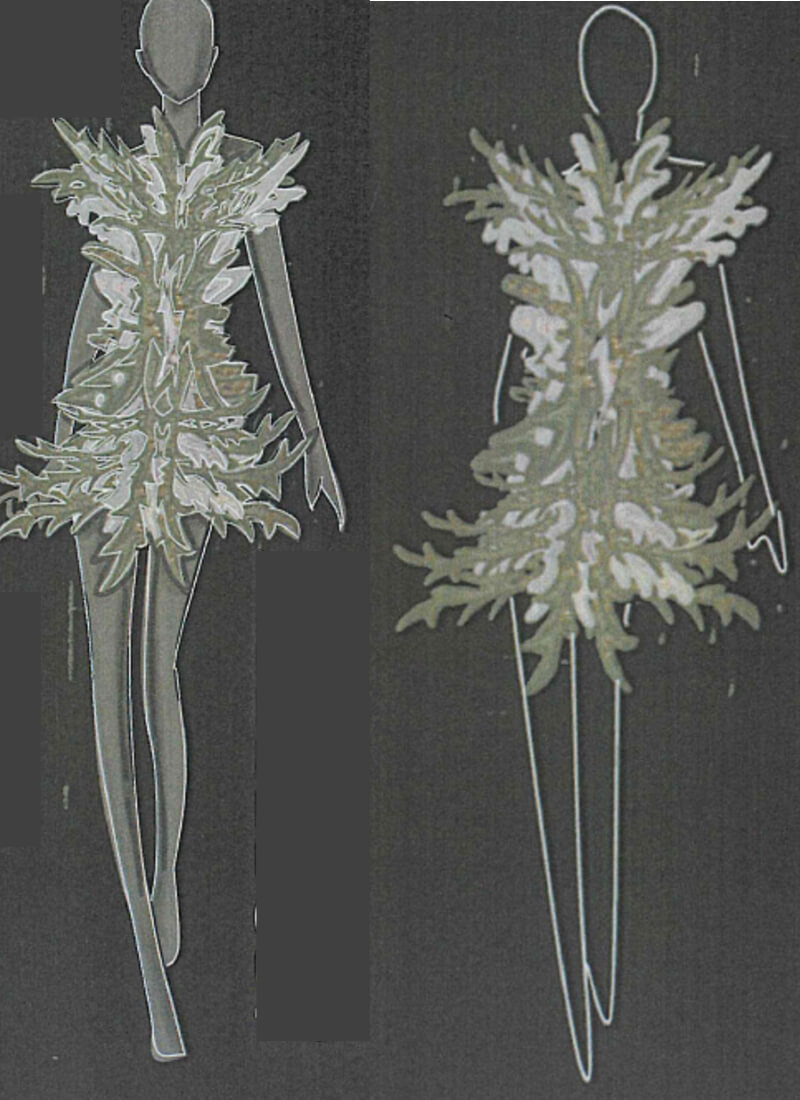
Professional Institute of International Fashion
野口 キララ
Work name:BRONZE PETITION
Concept
In ancient Japan, deer were considered the gods of harvest because they signaled the seasons with their antler shedding.
This design draws inspiration from bronzeware artifacts, many of which depicted deer, thus centering around the theme of ancient prayers.Features
- Inspired by bronzeware tales and deer motifs, the design uses denim cut in the shape of deer antlers painted with "iron paint" to express a bronze color.
- Pink accents, reminiscent of the cross-section of fallen deer antlers, add contrast to the design alongside the bronze color.
-
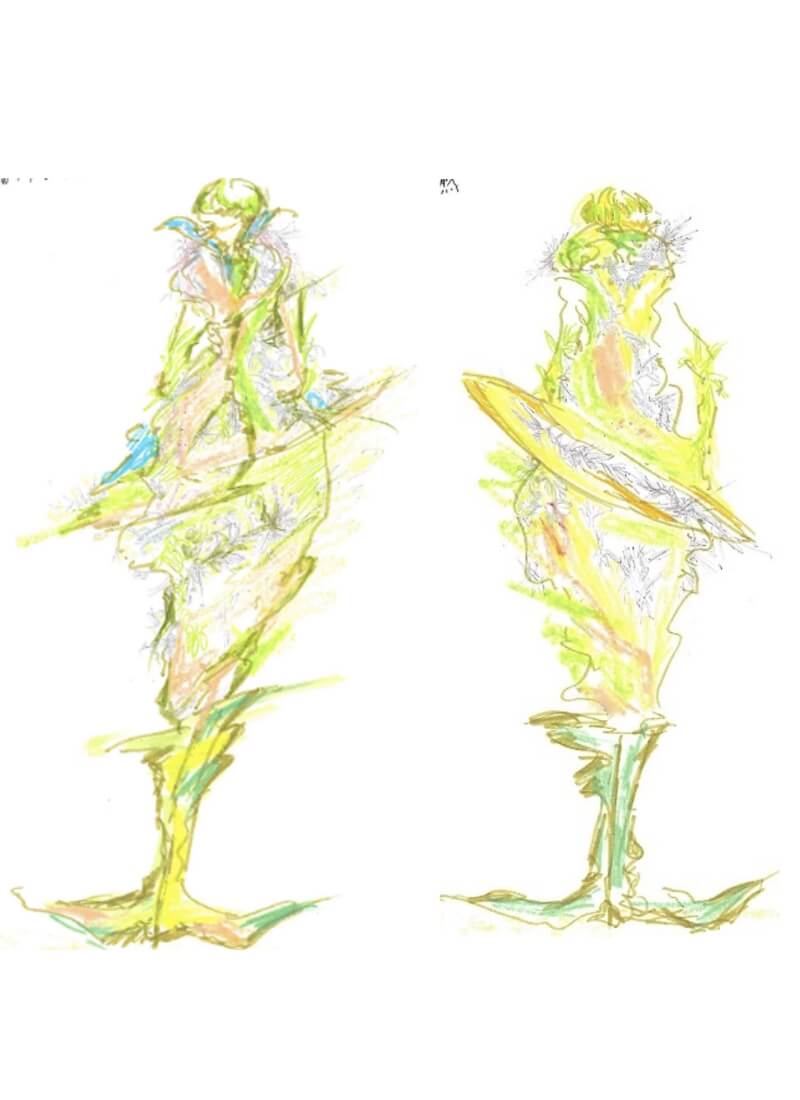
Esmod Tokyo
濵 夏歩
Work name:Strange Nature
Concept
"A little strange yet endearing"
This work aims to convey to a wide audience the uplifting warmth of handmade items that I remember from interacting with my grandmother's knitting as a child.
Tracing back to the roots of my fashion design journey, the work uses knitwear and original textiles to create a sense of comfortable eccentricity with a quirky edge.Features
- The design is inspired by the peculiar changes in the shapes of life forms, such as intertwined dense plants and the bending bodies of humans.
- Distortion and three-dimensionality are created using beads and wire.
- The knitwear expresses the joy and endearment of free color use while being friendly to the environment.
-
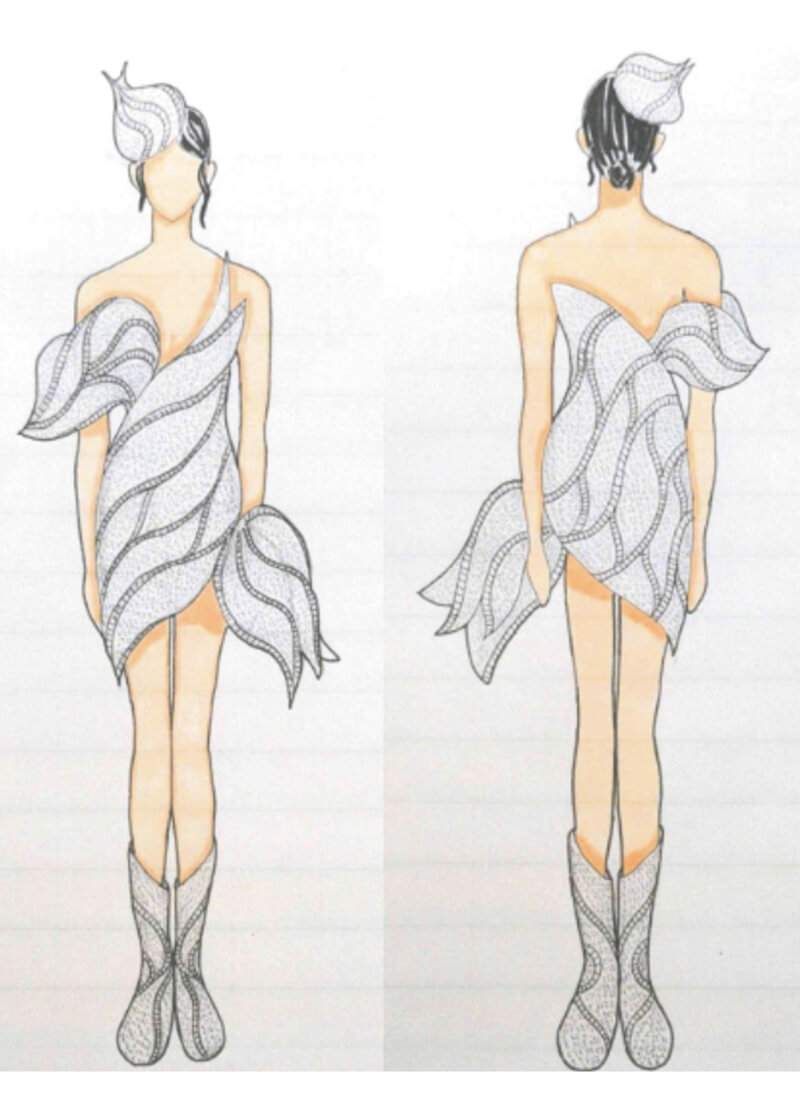
The University of Tokyo & Vantan Design Institute
増田 凌・金田 昌也・永田 莉紗
Work name:Whole-Zip
Concept
The design aims to express organic forms found in nature using zippers, which are strongly artificial structures characterized by "interlocking metal or plastic shapes forming straight lines."
Features
- Consists of units produced using a home 3D printer that can be connected to each other, which combine custom-designed 3D-printed zippers following curved lines and flexible 3D-printed fabric.
- The design leverages the smooth curves unique to 3D printing to create forms inspired by flower buds.
-
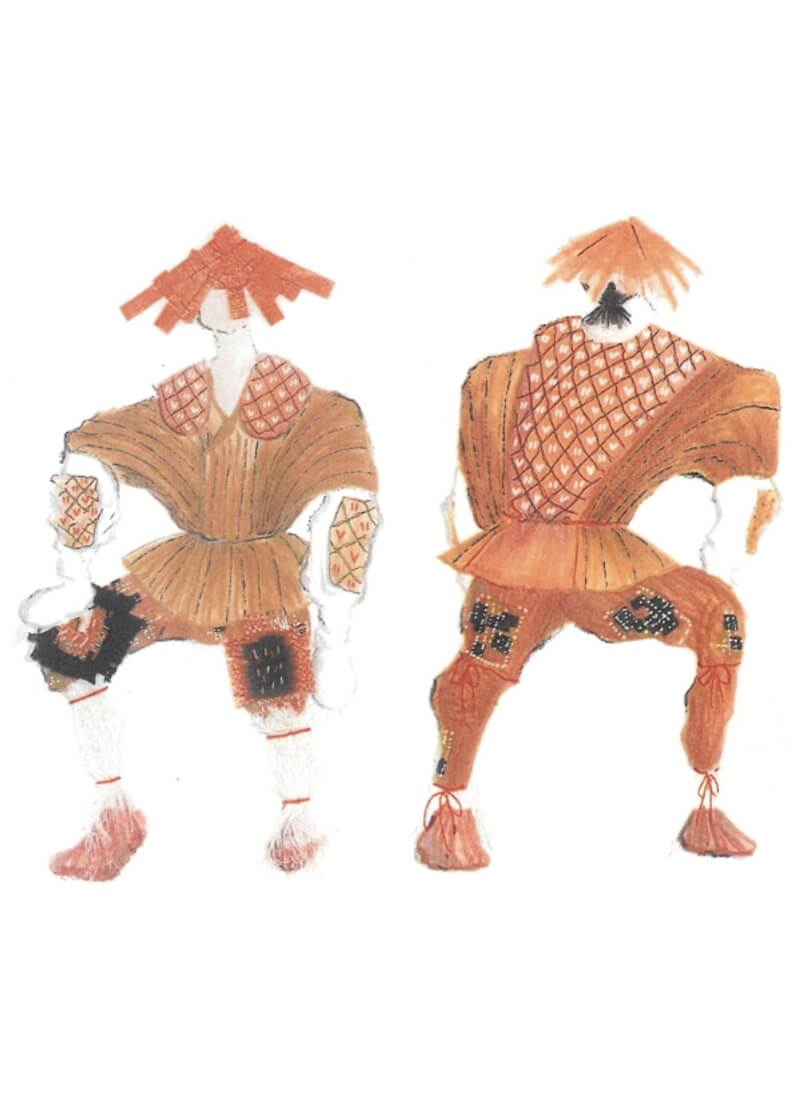
Bunka Fashion Graduate University
村田 充生
Work name:NORAGRI
Concept
The theme is "Fashion = Agriculture." The concept of this design emerges from the interplay between NORA (野良, fields), NORAGI (野良着, work clothes), and AGRI (agriculture).
It is inspired by my identity as a "farmer," being born and raised as the eldest son in an agricultural family in a mountain village in Shinshu. It envisions new ways of farming through fashion design.
It imagines a future Japan where agriculture is part of daily life, creating fashion designs from "present farmers" for "farmers a century from now."
Transforming "noragi" (野良着, workwear) into "noragi" (農良着, agri-work-wear) and later into "noragi" (農楽着, agri-fun-wear).Features
- Traces the evolution of Japanese farmers and their workwear, focusing on "noragi" before the Showa era and "workwear" after it.
- Combines unique cuttings and structures of noragi, the modern functionality of workwear, the traditional techniques of rural areas, and details inspired by personal experiences.
- For me, the reality is "NO" (agriculture). And real clothing emerges from that reality.
-
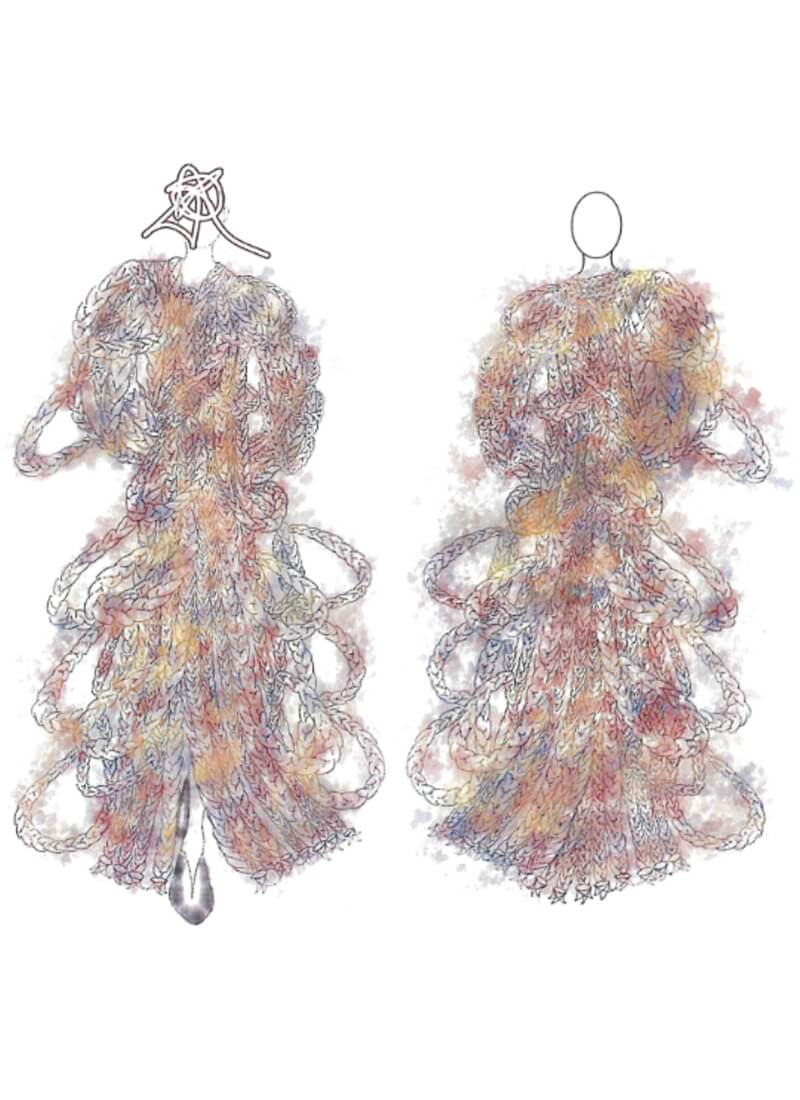
Tokyo Mode Gakuen
谷城 ひとみ・菊池 舞子・近藤 裕佳
Work name:Color
Concept
Expresses Tokyo as a place where diverse individuals intersect.
Features
- A design inspired by curtain tassels.
- The distinctive feature is the use of fabric weaves in varying scales.
- The weaving incorporates straight lines and loops, adding complexity and intricacy to the design.
-
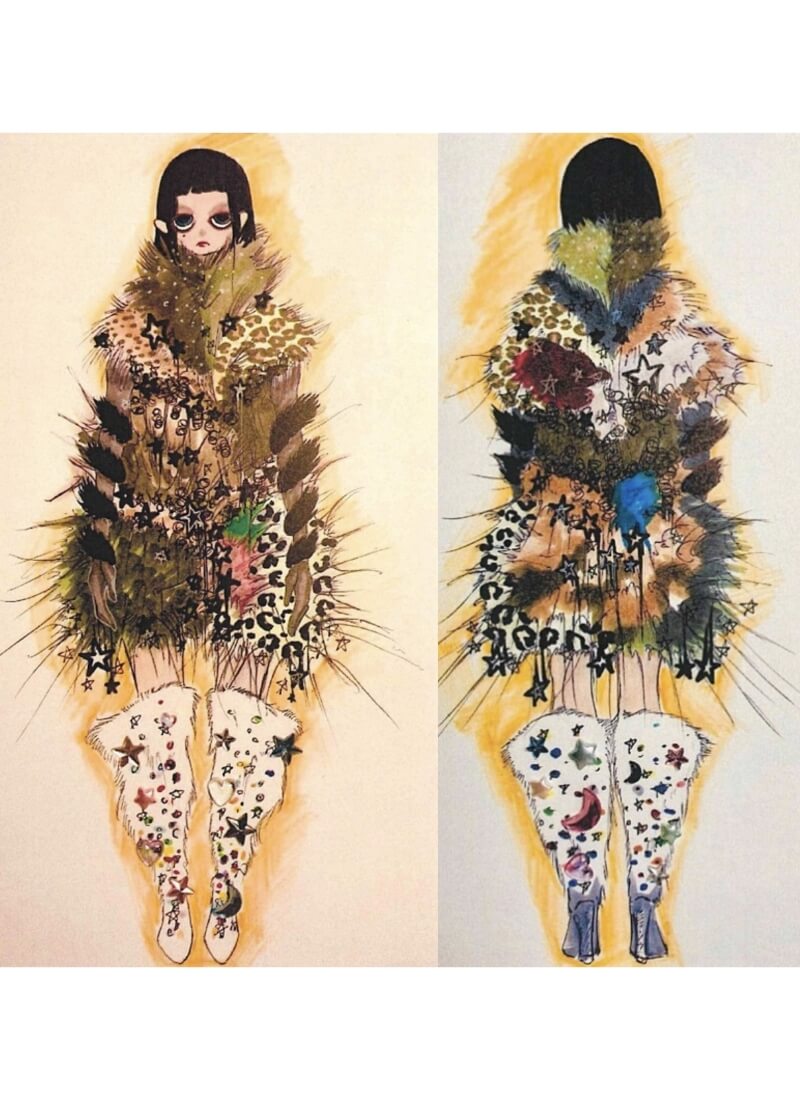
Bunka Fashion College
山口 空叶夢
Work name:OVERRIDE
Concept
The urge to playfully mess with a pet or a loved one.
The desire to intentionally ruin something beautiful.
The aim to upgrade and personalize something you love deeply.
These kinds of feelings are channeled into this work.Features
- Main materials include fur and faux fur from discarded clothing. The work involves updating and remaking discarded clothing in a personal style.
- The work is designed to capture playful emotions, such as those of a child putting stickers on a beloved pet.
-
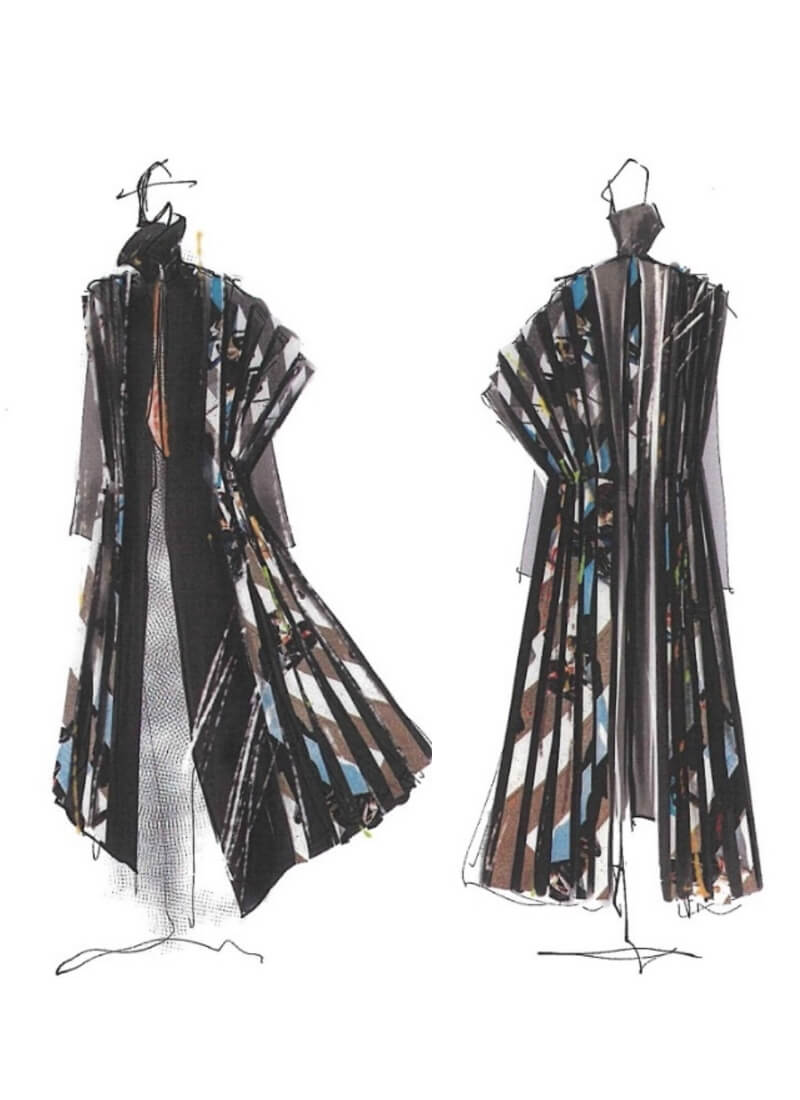
Bunka Fashion College
山下 エミリ
Work name:Camouflage City
Concept
To intersect the image of people blending into the city with its character to identify individuality in a depersonalized urban landscape and express contemporary urban life.
Features
- Utilizes action pleats symmetrically on the shoulders of a coat, incorporating mosaic art techniques, creating a design where the urban landscape appears in the coat fabric.
- Expresses the city’s character = the texture of the city, such as the asphalt of the pedestrian crossing, the worn color of the signboards, and the rust marks caused by age-related deterioration, in a brutalist manner.
-
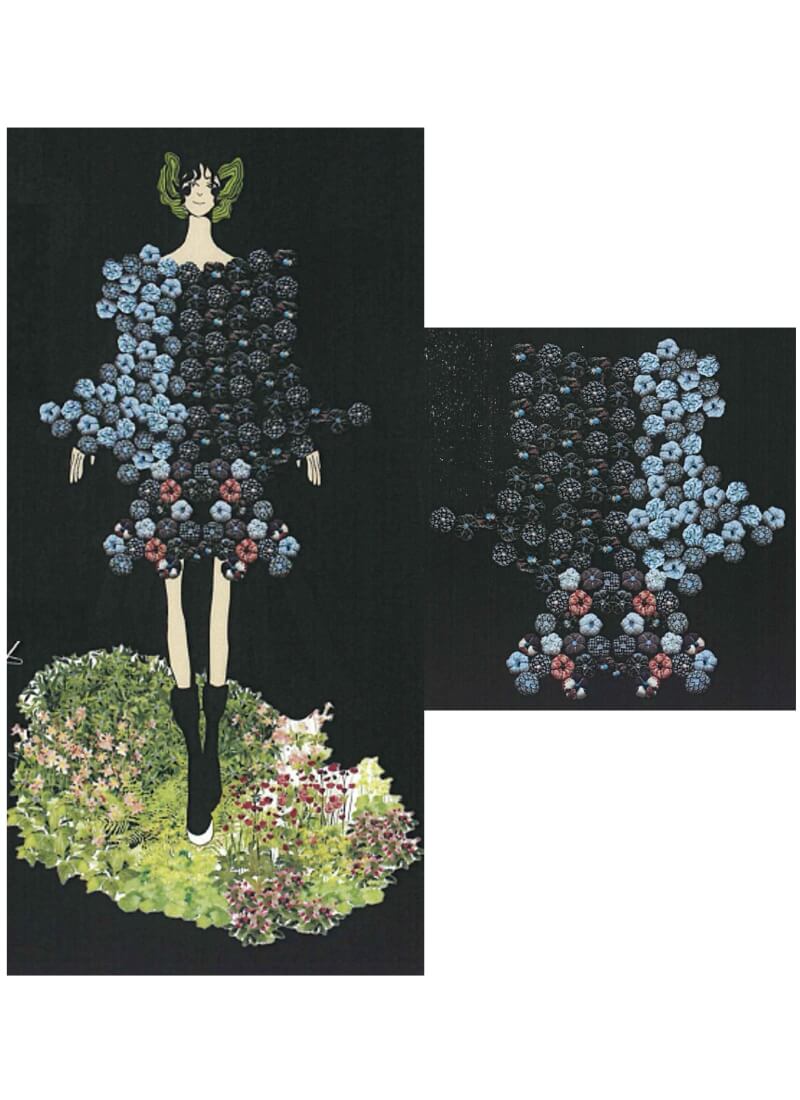
Professional Institute of International Fashion
山田 萌永
Work name:Flower Temari Balls
Concept
"Chirimen Work × Modern Fashion"
While chirimen crafts are traditionally not used for clothing, the design incorporates these traditional Japanese patterns and techniques into a style appealing to young people.Features
- Original patchwork wear created using flower temari balls.
- Easy to put on and take off, even for individuals with disabilities.